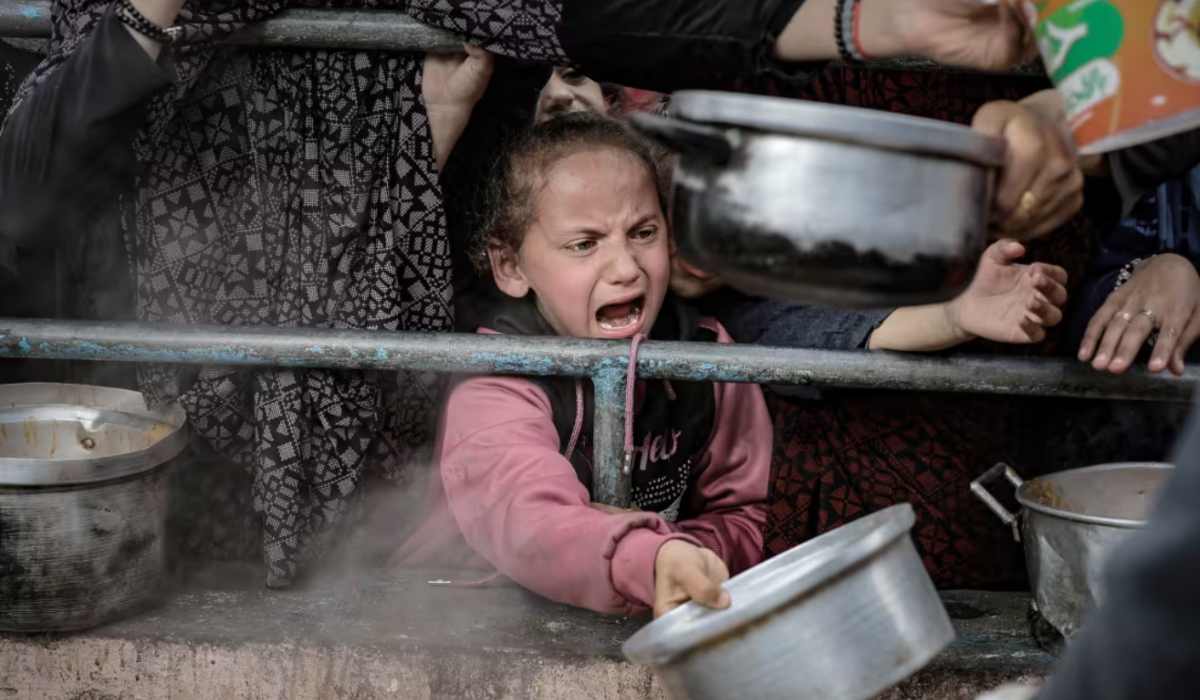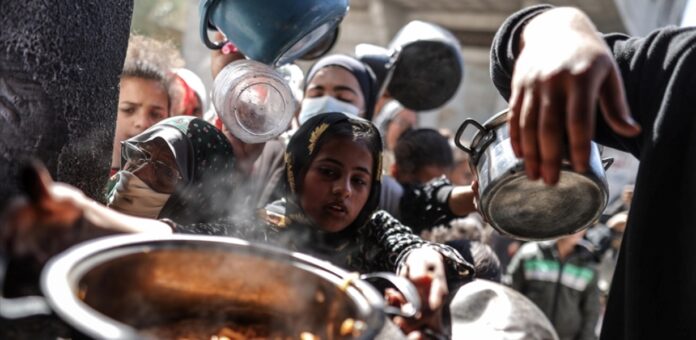Gaza is currently experiencing a historic hunger crisis. For the first time in its history, UN officials call it the “hungriest place on Earth” with all 2.2 million inhabitants at risk of famine.
What was once a lifeline of humanitarian aid has now been throttled to near extinction. Since 2023, Israel’s all-out blockade has choked the flow of essential supplies, leaving over 116,000 metric tons of aid stranded at the border and an entire population at the mercy of a collapsing system.
The result isn’t just hunger, it’s a deliberate descent into famine. As Gaza’s food infrastructure crumbles under bombardment and aid convoys turn deadly, survival itself has become a battlefield.
All-Out Blockade
Israel’s 2023 blockade reduced humanitarian assistance previously supporting Gaza by over 80%. Closures of borders and suspended UN and NGO activity meant supply lines were effectively throttled.
When truck convoys dwindled to a trickle, 116,000 metric tons of assistance remained stuck at the border through July 2025, leaving Palestinians reliant on a system in collapse. Aid deprivation eclipsed military violence as the overarching peril.

Destruction of Food Infrastructure
Bombing and shelling destroyed Gaza’s food infrastructure. About two-thirds of bakeries, flour mills, and food warehouses in the Strip remain destroyed. More than 60% of agricultural land fell victim to attacks or remained inaccessible because of danger zones.
The collapse resulted in local food production grinding to a halt, compelling dependence on imports that aren’t getting to the population.
Increasing Malnutrition and Starvation
As rations were cut to one-third of needs, malnutrition levels have soared. Acute child malnutrition rates have doubled, with WFP and UNICEF reporting that up to 10% of children under the age of five may be affected through June 2025.
At least 79 Palestinians were killed in one stampede at an aid convoy, a sign of desperation. Experts say this amounts to a “man-made famine” with potentially deadly consequences.
Deadly Humanitarian Efforts
In mid-July, at least 80 were killed and hundreds wounded when Israeli troops fired on crowds at relief convoys. Previous weeks saw panicky stampedes at Gaza Humanitarian Foundation distribution points kill dozens. Those breakdowns made others fearful of getting aid, further exacerbating the hunger crisis.

Vulnerable Groups and Children at Risk of Extinction
UN data confirms Gaza is the only region on Earth where 100% of people face famine risk. Among them, children and the elderly suffer most. Over 65,000 under-fives were diagnosed with acute malnutrition by April–May 2025. The elderly also face alarmingly high starvation death rates. Survival tactics, eating grass, animal feed, and plastic, have surfaced.
Gaza’s famine crisis is more than war; it shows a structural breakdown of the norms of basic survival under siege. A shattered food system, severed aid, deadly aid delivery, escalating malnutrition, and fragile populations brought to the brink sketch a dire picture.
The world needs to address Gaza not just as a war zone but as a sustained humanitarian crisis. This disastrous famine is not collateral damage; it’s an intentional result of policy choices. Restoring unobstructed aid, repairing infrastructure, and ensuring safe delivery can avert further loss.
If these actions fail to take place, Gaza can go from the world’s most hungry place to the most tragic human-made disaster of our era.
Stay tuned to Brandsynario for latest news and updates







































